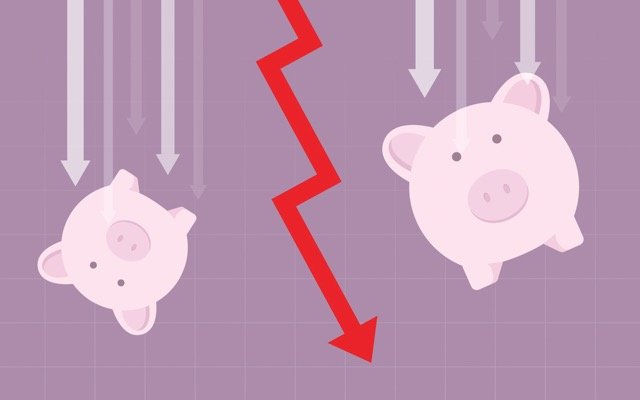How wealthy do you feel at the moment?
It is an interesting and far from irrelevant question because a lot of economic research has shown that how wealthy we feel has real world effects in how much we spend, and also in how cautiously (or otherwise) we invest and borrow.
Well, if you look at the raw numbers, you would have to conclude that more Australian households are feeling a little poorer than they were a year ago.
Falling house prices driving wealth down
The main factor in that change will be real estate, which is undergoing a correction from sky-high pandemic prices as interest rates rapidly ratchet upwards.
However, there are other factors in the equation.
Prices for a range of household items have risen – some of them substantially – due to inflation, which is also taking a chunk out of household budgets and perhaps adding a weekly reminder to households that they should feel less wealthy.
That is not so much due to a negative wealth effect but more of a recognition that the real spending power of each dollar has fallen due to inflation, so wealth needs to go up more quickly to compensate.
Other large wealth ‘containers’ such as superannuation accounts and share portfolios are likely to have been negative in the past year, again reducing that wealth effect and potentially making consumers much more cautious.
Total household wealth falling
According to Rainmaker analysis, total household wealth has plunged since peaking in 2021, with falling housing prices the main contributor.
Using just one example, the net value of a household that started the year with a $2 million home, $1 million in superannuation and a $100,000 share portfolio was down nearly 6%.
Of that total, the house value fell $140,000, super by $34,000 and the share portfolio by $500.
That is a big turnaround from the previous year when house values rose 24%, superannuation balances jumped by more than 15% and investment portfolios were up by 17%.
The last quarter was bad
Using the latest Australian Bureau of Statistics (ABS) figures on household finance and wealth for the September quarter, that was a particularly damaging three months.
Total household wealth fell by $276 billion or 1.9% over the quarter, mainly driven by a $343 billion or 3.6% fall in the value of housing assets.
Since the March quarter, total household wealth fell by $770 billion or 5.1%, courtesy of a $490 billion or 5% fall in house prices.
Looking at the quarter from an individual perspective, household net wealth fell by 2.1% or $11,700 over the quarter, once again driven by a 3.8% or $13,900 decline in the value of housing assets.
The reason the individual numbers and percentages are smaller is because the super wealthy have been hit hardest by falling property and share markets.
Wealth is still falling
Like all statistics, these ones are already out of date by the time they arrive.
However, with interest rates having continued to rise since the end of September, housing across the major cities falling by a further 2.8%, and more weakness in superannuation and the share market, there is no sign of a positive shift as yet.
Of course, wealth is a dynamic thing and it can change over time.
With house prices being the largest and most direct input into most household wealth equations, that means the direction of interest rates is one of the main contributors.
It also means any signs of a ‘pivot’ or ‘pause’ from the Reserve Bank is probably the key to household wealth beginning to stabilise and perhaps start heading in a positive direction.
